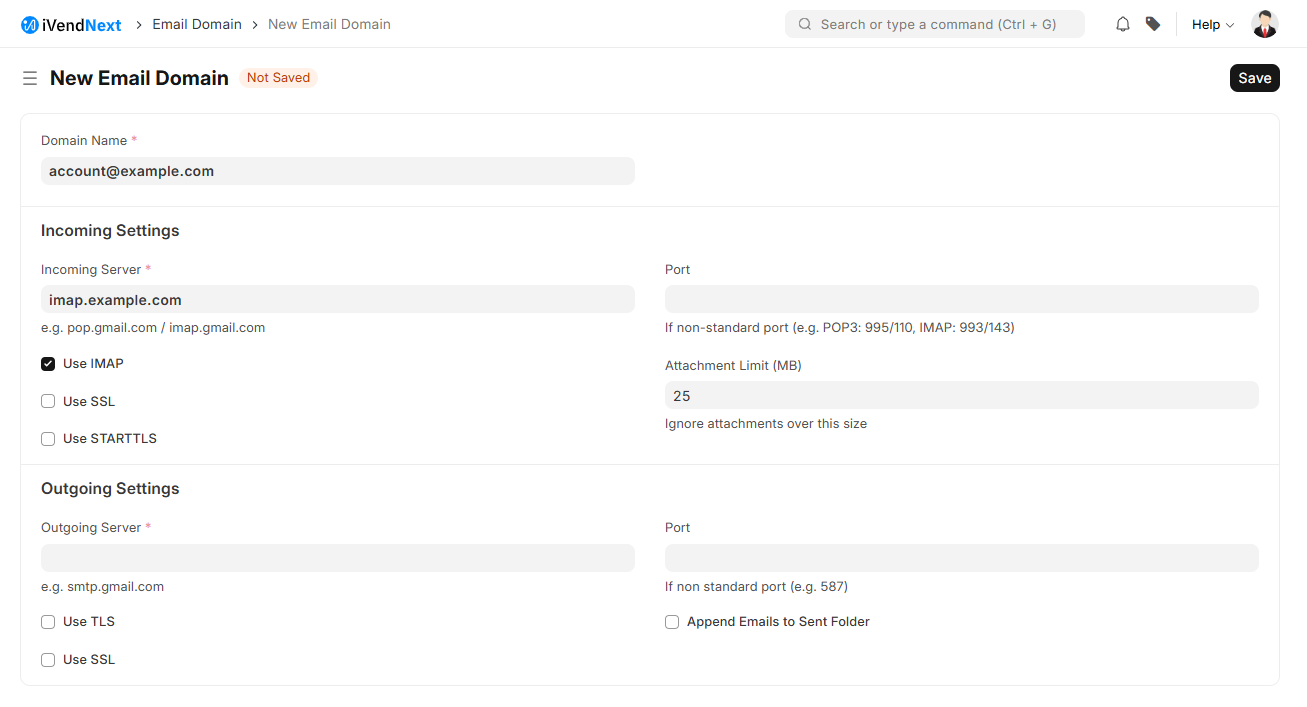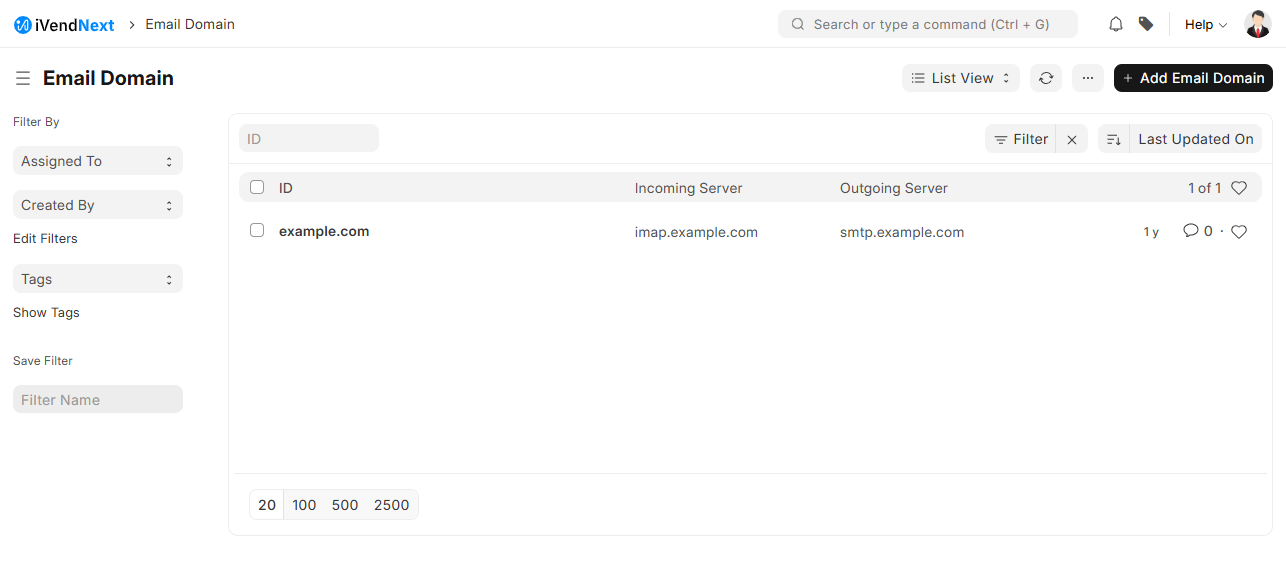Email Domain
Introduction
The Email Domain is the display name of an email network/service account you're setting up for your email services in iVendNext. You can skip to Email Account creation if you are using one of the services listed here. You can configure Email Domains in iVendNext for easy setup of all Email Accounts.
Access Email Domain Settings
To find Email Domain settings go to: Home > Settings > Email Domain
What is my Email Domain?
You might have purchased an Email service from your internet service provider or your IT services provider. For example, if you access your business mailbox with a URL like http://mail.yourcompany.com, then yourcompany.com is expected to be used as your email domain. iVendNext tries to guess the Email Domain from your initially entered example Email Address if you started from there.
If you want to send and receive emails on your iVendNext account, you need to correctly set up an Email Domain. You may be using free mail services like GMail or Yahoo. In this case, you don't need to create a domain, instead select a service provider from the list. However, you might have to allow access to iVendNext for your GMail account.
iVendNext creates a template Email Domain using example.com for your reference. You should add your new domain if you want to use it in your iVendNext account.
IMPORTANT: If your actual mail account id differs from the work email address you use in the Email Account setup later, you need to use the option Use different Email ID when creating the different work mail accounts to communicate with your service and use the related password!
Steps to create an Email Domain
The steps to create a new Email Domain are summarized below:
Go to the Email Domain list, click on New.
Enter the Example Email Address. This is where you enter your business email address. For example, if your email ID is yourname@yourcompanyname.com you should enter this.
Email Server. This is the URL of your mail server or the email service that you have purchased. For example, it may be mail.yourcompany.com or imap.yourcompany.com.
Use IMAP. IMAP and POP are two services used by most mail servers for incoming emails. If your Email server allows IMAP service for the incoming emails keep this checked. Otherwise, leave this unchecked.
Use SSL. If your mail server uses SSL (Secure Socket Layer) communication keep this checked.
Do I have SSL?:
You may have purchased an SSL certificate from your IT service provider for SSL and they may have set up SSL for your mail server. If you're using 'https' while accessing mail server over browser then you might have SSL setup.
Use SSL for Outgoing. If your mailserver uses SSL for outgoing, enable this to explicitly use SSL for outgoing emails. Defaults to port 465.
Append Outgoing Email to the Sent Folder. If you are not using standard mailservers provided by GMail and similar services, you might need to enable this option to append all outgoing emails to the email account's inbox. (Recommended for email servers like Zimbra and CPanel).
Attachment Limit (MB). You can limit the size of file attachments in emails sent from iVendNext.
SMTP Server is the outgoing email service address of your email server.
Tick Use TLS if your SMTP service supports TLS for security.
Default port. SMTP service is usually set on port 25. If your email server is set up on a separate port number you can set that up here.
After saving the domain
Once you click on save, these settings are validated by iVendNext and the Email Domain gets saved.
Sometimes this could take a few seconds and you might have to wait. This email domain is then available in a dropdown called Domain in the Email Accounts screen.
Entered everything but still unable to set up an Email Domain?
If you've entered and verified the above settings and are still unable to set up an Email Domain, you can contact iVendNext support within your account for help.

